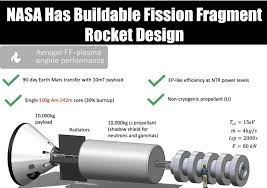
Breaking News
 NonConformist Series: Practical Wealth - Join us virtually Dec 29-30, 2025
NonConformist Series: Practical Wealth - Join us virtually Dec 29-30, 2025
 New bill would allow private citizens to fight cartels: 'WE ARE UNDER ATTACK'
New bill would allow private citizens to fight cartels: 'WE ARE UNDER ATTACK'
 Carnivore Got Me 90% There. This One Drink Changed Everything
Carnivore Got Me 90% There. This One Drink Changed Everything
Top Tech News
 Perfect Aircrete, Kitchen Ingredients.
Perfect Aircrete, Kitchen Ingredients.
 Futuristic pixel-raising display lets you feel what's onscreen
Futuristic pixel-raising display lets you feel what's onscreen
 Cutting-Edge Facility Generates Pure Water and Hydrogen Fuel from Seawater for Mere Pennies
Cutting-Edge Facility Generates Pure Water and Hydrogen Fuel from Seawater for Mere Pennies
 This tiny dev board is packed with features for ambitious makers
This tiny dev board is packed with features for ambitious makers
 Scientists Discover Gel to Regrow Tooth Enamel
Scientists Discover Gel to Regrow Tooth Enamel
 Vitamin C and Dandelion Root Killing Cancer Cells -- as Former CDC Director Calls for COVID-19...
Vitamin C and Dandelion Root Killing Cancer Cells -- as Former CDC Director Calls for COVID-19...
 Galactic Brain: US firm plans space-based data centers, power grid to challenge China
Galactic Brain: US firm plans space-based data centers, power grid to challenge China
 A microbial cleanup for glyphosate just earned a patent. Here's why that matters
A microbial cleanup for glyphosate just earned a patent. Here's why that matters
 Japan Breaks Internet Speed Record with 5 Million Times Faster Data Transfer
Japan Breaks Internet Speed Record with 5 Million Times Faster Data Transfer
Nearterm 10X Aerogel Fission Fragment Rocket Will Lead to Interstellar Capability

A new NASA NIAC (NASA Innovative Advanced Concepts) project is creating a buildable near term design for a nuclear fission fragment rocket. It would enable manned mission to Mars with 90 day travel times.
The fission fragment system would give experience in a technology which could eventually enable interstellar rockets with speeds of 10% of the speed of light.
A mature and advanced fission fragment rocket using hundreds of tons of fissile fuel and a 200 gigawatt reactor could have a design that could reach about 10% of light speed.
The proposed designs for Fission Fragment Rocket Engines are prohibitively massive, have significant thermal constraints, or require implementing complex designs, such as dusty plasma levitation, which limits the near-term viability. NASA NIAC researchers propose to develop a small prototype low-density nuclear reactor core and convert the nuclear energy stored in a fissile material into a high velocity rocket exhaust and electrical power for spacecraft payloads.

 Aluminum Causes Brain Damage
Aluminum Causes Brain Damage Advanced Propulsion Resources Part 1 of 2
Advanced Propulsion Resources Part 1 of 2

